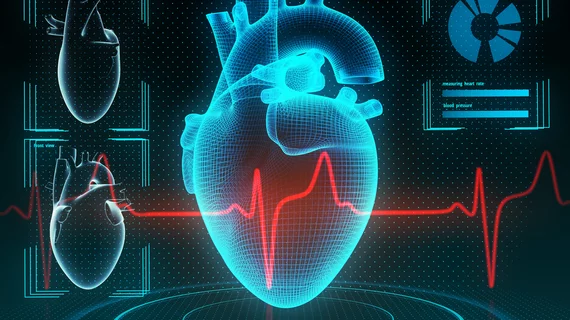Deep learning method may produce faster cardiac MRI reports
International researchers have created an artificial intelligence (AI) method capable of automatically quantifying left ventricle (LV) function from cine MRIs, according to a multivendor, multicenter study published Oct. 9 in Radiology. Experts believe it may lead to faster cardiac MRI reporting.
Quantification of LV ejection fraction (LVEF) is central to diagnosing cardiovascular disease, but current methods require lengthy segmentation times and often lack quality.
“Quantification of LV function requires careful review of and manual segmentation on many individual images, a time-consuming task hampered by variations in image quality and observer education and experience,” wrote Qian Tao, with Leiden University Medical Center in the Netherlands and colleagues.
In their retrospective study, Tao et al. trained an algorithm on 596 cine MRI data sets taken from three major MR vendors across four international medical centers. Researchers trained three convolutional neural networks (CNNs) using those data sets, breaking them down into sets of increasing variability.
They found the third network (CNN3)—trained on a clinically diverse cohort of 400 patients—was in the closest agreement with the three experienced expert observers. In comparison to manual analysis, CNN3 demonstrated an average perpendicular distance of 1.1mm ± 0.3. While, CNN1 and CNN2 reported 1.5 mm ± 1.0 and 1.3 mm ± 0.6, respectively.
Additionally, CNN3-derived LV function measurements showed “high” correlation and agreement with parameters taken manually for data sets from multiple vendors and centers, the authors noted.
“We developed a fully automatic cine MRI analysis system based on CNN and evaluated it in an extensive multivendor, multicenter, heterogeneous cohort,” Tao and colleagues concluded. “Once trained with data of sufficient variability, the system can produce fast, accurate, and fully automated LV detection and segmentation for a wide range of cine MRI inputs.”
In a corresponding editorial, Patrick M. Colletti, with the Department of Radiology at USC’s Keck School of Medicine in Los Angeles, wrote Tao and colleagues should be “applauded” for their success and subsequently “placed in perspective.”
He argued the findings of Tao et al. would improve the time it takes to generate cardiac MRI reports, but cautioned it will take more time before similar solutions are ready to be used as approved software.
“As professors and educators, we can tell our trainees that while data science is an important tool in the service of our radiology practice, we are a very long way from a comprehensive robotic radiologist,” Colletti concluded. “In the meantime, radiologists and data scientists will have a firm and growing partnership.

